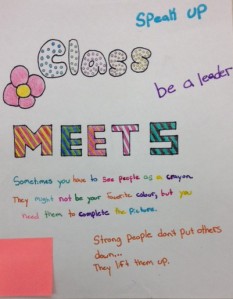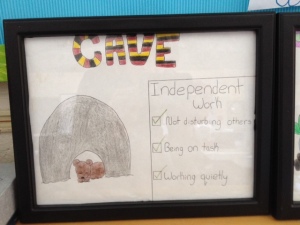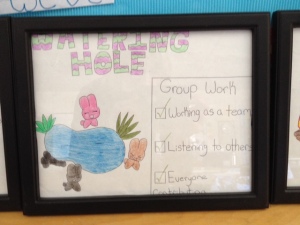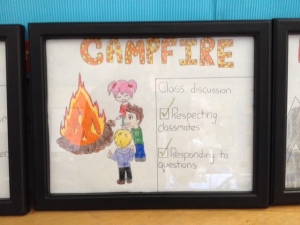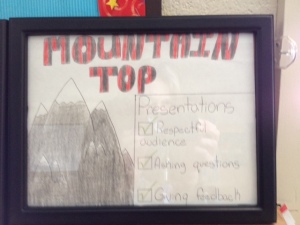However, I have had a success. I gave it one last-ditch effort with my History curriculum, and somehow, made History matter.
I posed the following question to both grades:
What are the 10 most significant events in Canada's history during your time period?
That was it.
As a class, we created criteria for what made a historical event significant.
Then, I turned them loose.
Each group had to create a timeline of their ten events, and be able to back up their choices. They had to know the 5 w's and be prepared to answer questions from their classmates.
The day before they presented I was worried. What if they didn't learn anything? What if they just regurgitated dates and places from Wikipedia? I knew that this wasn't entirely the case, as I had pages of anecdotals from listening in as they researched and debated within their groups, but had they retained anything?
Presentation day arrived. As each group got up to present, I became more and more blown away and amazed by what I was hearing.
Most groups prepared timelines using a variety of software - the favourite and most user-friendly was voted to be the ReadWriteThink Timeline generator. As each group presented, students added stickies to a paper timeline to compare and contrast the events each group chose.
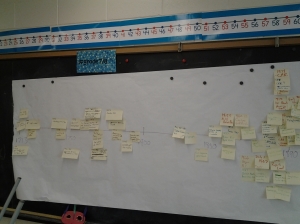
They debated the merits of the choices of other groups. "Was the first gold rush or the biggest gold rush more significant?" They asked deep questions. "What would Canada be like today if the Metis had won the rebellion?" They challenged each other. "Are you sure that is the correct date?" They synthesized their learning. "I noticed that during the Grade 7 timeline (1713-1800) there were many wars and rebellions, then during the Grade 8 timeline (1850-1890) the key events were about Canada becoming a country." They uncovered harsh realities that they knew nothing about. "Why did they have residential schools?" "I can't believe they lasted until 1996!" "This affected people living here? In our community?"
Historical thinking and inquiry. They nailed it!
